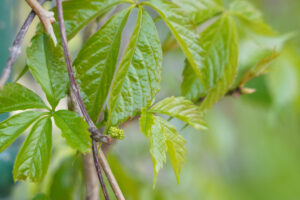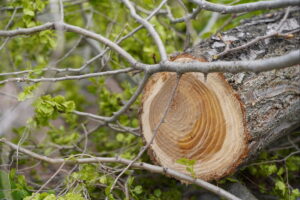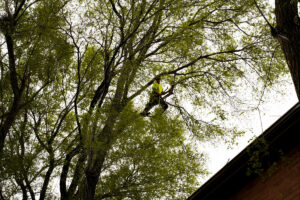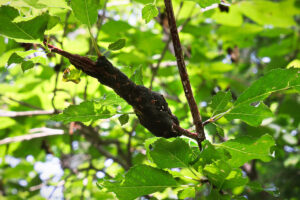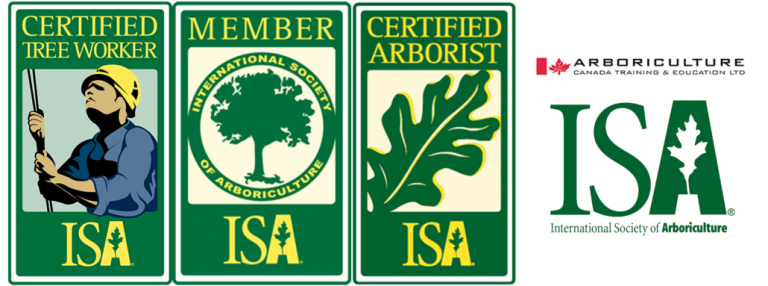What’s Wrong With My Tree?! 5 Symptoms of a Sick Tree & How We Can Help
One of the most common concerns that tree owners express is how they can correctly determine if their tree is sick. Here at Advanced Tree Care, we are a team of expert arborists who can help your trees flourish and stay protected against a wide range of threats before they set in. However, if you would like to visually inspect your tree yourself before contacting us, these 5 symptoms outlined below are clear indicators that your tree may be seriously suffering.
-
Dead Branches
The biggest giveaway of a sick tree are bare branches during the seasons in which they should be covered in leaves. Also keep in mind that on dead branches of deciduous trees, dead leaves will cling well into the winter instead of dropping to the ground as they would on a healthy deciduous tree.
-
Peeling Bark
Another sign that your tree has a disease is peeling bark. The bark on your tree is very important, as it protects the core of the trunk and keeps the tree healthy. If the bark starts to peel excessively, the tree may not maintain necessary nutrients and could die. It is important to note that it is normal for many trees to experience small amounts of peeling bark. However, if you notice that larger pieces of bark are falling from your tree and exposing the internal wood fibers, contact us and we would be happy to help you determine the risk factor and next steps.
-
Abnormally Coloured and/or Wilted Leaves
Yellow or brown leaves combined with decreased growth are often signs of Armillaria Root Rot.. You may also notice branches dying and excessive wilting in trees that have this disease. Fungus in the soil rots and attacks the roots of trees, which causes this to happen. Trees with this root rot often take a few seasons to die but the process can be accelerated if the tree isn’t getting enough nutrients or has attracted an infestation.
-
Strange Growths and/or Fungus
Large fungus or strange fungus-like growths on the trunk or branch of a tree can indicate that your tree is experiencing internal rot and anything beyond the fungus may be dead or dying.
-
Infestation
Some common signs of infestation in trees include – webbing nests, chewed leaves, fallen healthy leaves, defoliated branches, larvae actively consuming foliage, mottled foliage, hidden infestations under leaves, scale insects along twigs or branches, sawdust on branches, trunks indicating wood boring insects, and holes in tree parts.
How We Can Help
If your tree has any of the above symptoms, we strongly recommend that you contact us, and we would be happy to help figure out an action plan for you. Our highly qualified consulting arborists have the extensive experience and training to find and solve problems before they destroy your tree. Using our years of industry accepted evaluation methods, we can help assess the risk potential that your tree may or may not possess. Our team maintains the objective professionalism to assess all factors contributing to tree risk.
Keep in mind that leaving a sick tree go unchecked can also fatally damage the surrounding land and, in some cases – entire tree populations. To find a plan that works best for you, you can follow along on Facebook and Instagram, or you can contact us here if you have any immediate questions or concerns.
Until Next Time,
The Advanced Tree Care Team


